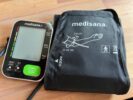The Blog Subscribe
Ian’s A to Z – B is for Bulb

Welcome to Ian’s A to Z of photography. A new word each week here on BTN! My words, and my take on them. Nothing too technical, just stuff important to me that I hope you find useful!
Bulb
You create a photograph by exposing light to either a sensor or film. The amount of light you expose to the sensor or film is referred to as the ‘exposure time’ or ‘shutter speed.’ To obtain a ‘correct’ or as you saw the scene exposure for a shot there are several elements, such as aperture which we covered previously here. Shutter speed is one of those factors. If you were shooting handheld in daylight outdoors, you would typically aim for a shutter anywhere around 1/125-1/200th of a second or higher, depending on focal length. This would be enough to freeze the scene without the use of a tripod.
So how do you get those misty streams, star trails, and car head light trails? This is where ‘bulb’ mode can come into use. Most digital SLRs these days have a default maximum shutter of 30 seconds in the ‘priority’ modes. But shooting in manual and cycling through the shutter speeds past 30 seconds should give you ‘bulb’ mode. This means you can either choose the exposure time up to 30 seconds or go into minutes and beyond 30 seconds.
So why would you use this? Your immediate thoughts maybe in dark situations and you’d be right. Shooting the night sky, star trails, car head light trails, light painting, just to mention a few. If you tried to shoot for any more than fractions of a second in daylight outdoors you would quickly over-expose your image. However with the use of ’neutral density’ filters you can limit the amount of light entering the lens and achieve longer exposures even in broad daylight.
One thing to consider when shooting long exposures ranging into minutes is you are likely to incur more ’noise’ in your images. This is because the sensor is becoming warmer due to the constant electrical current as it gathers the information during the exposure. This is why you’ll often find star trail shots are actually created ’stacking’ multiple shooter exposures.
Author

Ian Lewis
 BTN Rebrands as The American Tech Network
BTN Rebrands as The American Tech Network Patrice’s Holiday Gift Guide: Books
Patrice’s Holiday Gift Guide: Books Patrice’s Holiday Gift Guide: Health
Patrice’s Holiday Gift Guide: Health tsoHost saved my bacon
tsoHost saved my bacon My first Raspberry Pi adventure
My first Raspberry Pi adventure